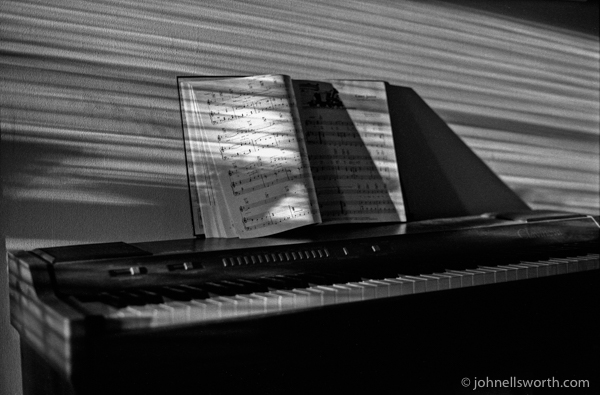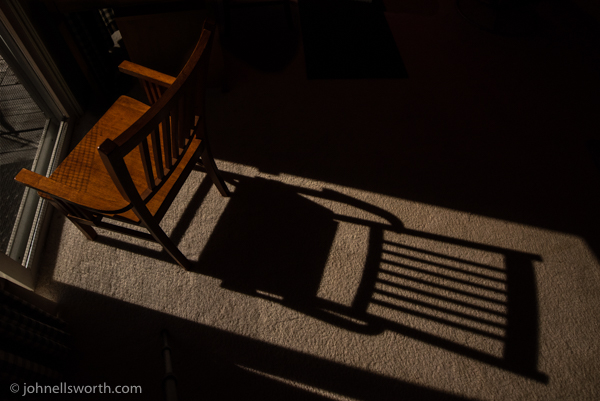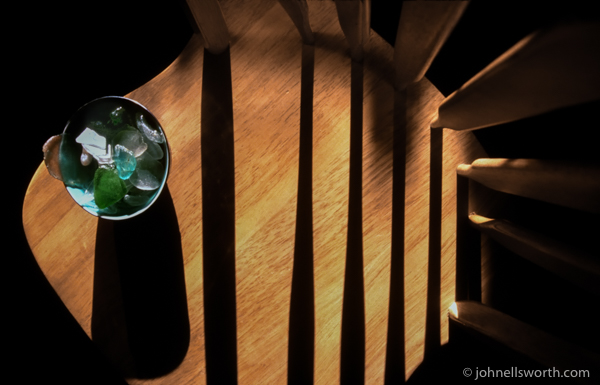As photographers, sometimes we overlook shadows as key elements of composition.
Claude Debussy said, “Music is the space between the notes.” Mozart said, “The music is not in the notes, but in the silence between.” Truman Fisher, an American composer, said, “The pause is as important as the note.”
Photographers read the light; follow the light. Derived from Greek, the word photography means “drawing with light.” But we must also read the shadows. For often it may be the spaces “not in light,” or in the “pause in light,” that impact an image.
Able photographers say shadow, or absence of light, is as important as the light. So include shadows in some of your photos to add another important element.
Long shadows can make an arresting image. You can compose for only a shadow, for a glimpse of the subject and its full shadow, or to include both the full subject and shadow. In the latter case, the subject is often off-center. But because its shadow is within the composition, it’s balanced. The asymmetry alone may make an engaging photo.
When I shoot shadows, I look for bold and simple shapes, more evident early or later in the day when the sun is low and the day is clear—or when the moon is bright and low.
I look for abstract as well as literal shapes. Sometimes I find these shapes right within my home as well as outside. You don’t have to travel far as these photos illustrate (three from within my home, one down the street).
 Last Snow, First Sprout —early March
Last Snow, First Sprout —early March
In “Last Snow, First Sprout,” the crocuses rise in the snow down the street from where I lived. Continuing the metaphor of music, the image suggests to me five music notes on a music score. The shadows outline the score. It’s not something I thought of as I photographed. I shot many compositions and selected this one because of its visual balance.
 Shadow Song
Shadow Song
In “Shadow Song“, we see an electric piano in my living room early one morning. The rising sun created shadows through the Venetian blinds. Captivated by the pattern, I thought it suggested a music score. Because of dim light, I needed a large aperture. As a result, my depth of field was shallow. But that works well. Note the piano keys in the lower left—out of focus as well as the right section of keys. I achieved an impressionistic rendering and some sharp and clear rendering as in a music composition.


Mission Chair in Moonlight
In “Mission Chair in Moonlight,” we continue with long shadows as a major part of the composition. I woke up before sunrise one morning to have a drink of water. It was about 4:00 am. The moon was full and the curtains on my patio/deck doors were drawn back. The shadow cast by the moonlight intrigued me. Tired as I was, I put my wide-angle lens (14-24mm) on my Nikon D750 then mounted the combo on a tripod. I shot from all angles for about 40 minutes. The moonlight was bright enough to focus. The shadow got longer and longer as I shot while the moon crept lower. This is the best of the bunch.
The chair is off-center, but because its shadow is in the composition, we have a balanced image. I needed to move the chair every 5 or 10 minutes so its shadow did not blend or touch the darker areas. I wanted it to “float free.”

Beach Glass and Shadows
I photographed “Beach Glass and Shadows” late one afternoon in my kitchen as the sun shone through the window. This one has an abstract quality because of its point of view. I rested my camera with a wide-angle lens on the top of the chair to stabilize the shots. Charmed when encountering the scene I shot the chair with the rung shadows. Something was missing. I grabbed a bowl of beach glass that was sitting on the kitchen table and placed it on the chair. It added color and a break in the pattern.

If you are interested in attaining prints of any of these images, please go to the “Light and Shadow” collection at my gallery store.
